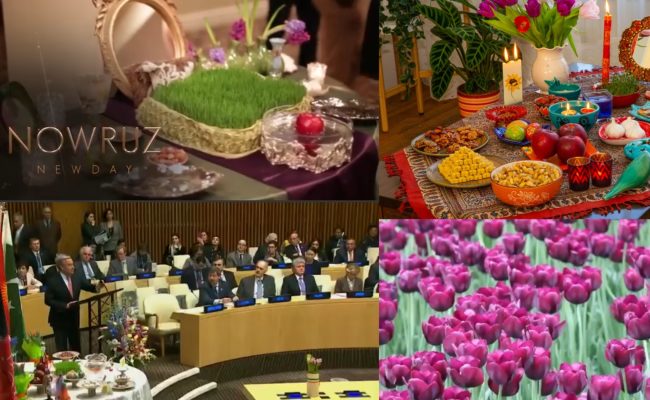By Adnan Hameed
TWA
___
The United Nations General Assembly, in a historic move, has officially recognized Nowruz, the Persian New Year, as the “International Day of Nowruz.” With the adoption of Resolution 64/253 in February 2010, the United Nations acknowledges the cultural significance and global reach of Nowruz, celebrated by diverse communities for over 3,000 years across Western Asia, Central Asia, the Caucasus, the Black Sea Basin, the Balkans, and South Asia. In Iran, it is the day of the new year in the Solar Hijri calendar.
Nowruz, which falls on the spring equinox around March 21st, marks the beginning of spring in the Northern Hemisphere, symbolizing renewal, rejuvenation, and the triumph of light over darkness. Rooted in the Persian Solar Hijri calendar, Nowruz is a time-honored tradition observed with rituals, customs, and festivities.
The traditional customs of Nowruz include house cleaning and shopping, decorating homes with flowers, visiting family and friends, food preparation, and the centerpiece of the celebration, the Haft-Siin table. The Haft-Siin, meaning “seven S’s,” is adorned with symbolic items beginning with the letter “S,” such as Sabze (greens), Samanu (sweet pudding), Persian olive, vinegar, apple, garlic, and sumac, alongside other traditional elements like a mirror, candles, painted eggs, and the Holy Book of Quran and Hafez Divan for Muslims. Nowruz is a common element of the common civilization and identity that we share as a whole and a civilization field, a part of which is Iran and Pakistan.
Nowruz serves as a reminder of the shared heritage and commonalities among civilizations, bridging cultures and fostering unity. As an ancient tradition, it signifies the enduring bond between communities and their collective history.
In commemorating the International Day of Nowruz, the United Nations invites people worldwide to embrace the spirit of Nowruz, celebrating diversity, promoting peace, and fostering goodwill among all nations.


